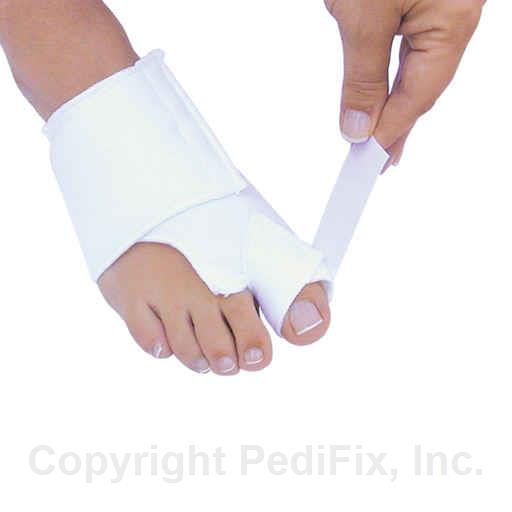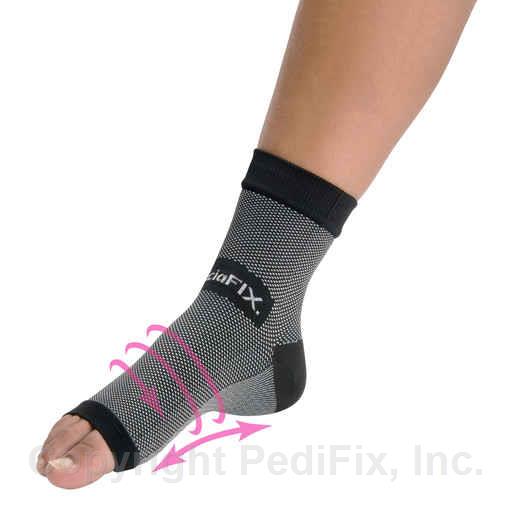How Does Using Night Splint Improve Plantar Fasciitis?

A night splint or plantar fasciitis brace reduces morning plantar fasciitis pain.
The unique feature of night splints is that they work while you sleep or rest!
Will a night splint for plantar fasciitis benefit you? Here’s what you need to know!
What is a Plantar Fasciitis Night Splint?
Plantar fasciitis night splints help to relieve morning pain caused by the condition.
The idea of night splints is the same, regardless of their shape, style, or size – keep the foot flexed while you sleep or rest.
A stretching routine like this can prevent morning pain by keeping ligaments in the foot long and limber.
Plantar fasciitis night splints fall into two main categories: rigid and soft sock night splints.
Both times have their advantages and disadvantages.
Why rest makes plantar fasciitis hurt more
In your foot, plantar fascia runs along the sole from heel to toe, connecting your heel and toes.
Standing, walking, and running require it to provide support and absorb shock.
Various factors can cause the plantar fascia to become inflamed and irritated, including repetitive movement, overuse, and stress.
It is called plantar fasciitis.
When you sit or sleep, your feet aren’t active, so that plantar fasciitis pain may worsen.
Inflamed tissues shorten as a result of rest. The tissues will stretch out when you start walking again, causing more intense pain.
How does a Plantar Fasciitis Splint work?
The most common conservative treatment recommendation for plantar fasciitis is rest and stretching.
Taking time to try strengthens and lengthens the ligaments and tissues in the foot, which can help break up painful adhesions, relieve pressure from painful heel spurs, and increase blood circulation.
It allows the injury to heal without additional strain, new trauma, or complications caused by extra stress.
The plantar fasciitis night splint combines these two effective conservative treatments – gently flexing your foot or feet while you sleep.
To reduce morning pain, a night splint assists a tight, damaged plantar fascia ligament in adjusting to walking after a night of inactivity.
It eliminates the stabbing pain that occurs during those first few steps in the morning.
Do Night Splints work for Plantar Fasciitis?
In several studies, night splints showed significant improvements in plantar fasciitis symptoms.
The most effective night splints combine the nighttime stretch with orthotics, stretching, and icing during the daytime.
This approach ensures that the arch stays supported and cushioned while walking or moving, reduces inflammation that may delay healing, and extends the effectiveness of conservative treatment throughout the night.
Benefits of using a Plantar Fasciitis Splint
People who wear a night splint experience a significant reduction in morning pain or the painful stabbing sensation they feel when they take their first few steps in the morning.
As the plantar fascia ligament contracts at night, it becomes less flexible (and more susceptible to pain) in the morning, so it is important to wear a night splint to maintain flexibility.
As well as improving your heel pain, a plantar fasciitis night splint can provide the following benefits:
During sleep, blood circulation improves, allowing adhesions and scar tissue to break up.
Sleeping on your heel pain can speed up the healing process.
Traditional Night Splints Vs. Sock Night Splints
A boot-style brace and a sock splint are the two types of night splints for plantar fasciitis.
Both options have pros and cons, but usually, the best choice is the one you will wear consistently!
Sock Night Splints
Sock night splints combine the comfort of a warm sock with the support of a night splint by using a flexible insert inside the sock from toe to heel.
Due to its lightweight and comfort, many people who suffer from mild to moderate plantar fasciitis prefer this option!
Pros of a Sock Night Splint
The sock night splint is lighter, softer, and easier to wear than a traditional night splint, providing similar relief.
Sock night splints don’t require straps, so you can put them on and take them off in seconds.
The sock night splint relieves morning plantar fasciitis by holding the foot in a stretched position as you sleep, rest, or even watch television.
A high-quality sock night splint keeps you cool while you sleep and is soft, cozy, and comfortable.
Many people prefer a sock night splint because it is more comfortable to wear consistently at night, leading to quicker pain relief in the morning.
Cons of a Sock Night Splint
Those with extremely severe or chronic plantar fasciitis may benefit from a traditional night splint if a sock night splint does not provide enough stretch to ease morning pain.
There are no two brands of sock night splints that are alike!
Choose a soft product that wicks, breaths well, and has the right amount of stretch for comfort and reduced morning pain.
Traditional Night Splints
Sock night splints are generally more flexible and smaller than traditional night splints.
Most night splints on the market used to be cumbersome, uncomfortable contraptions.
In recent years, newer, more comfortable, and lighter models have become available!
Pros of Traditional Night Splints
Traditional night splints can be fully adjustable and stretched at just the right angle.
Traditional night splints may be better if you need extra stretch to prevent morning pain.
Cons of Traditional Night Splints
Some traditional night splints can cause discomfort, suffocation, and bulk.
Make sure you read reviews before you buy anything and choose products with money-back guarantees to avoid getting stuck with something that doesn’t work.
Ensure that the night splint you select can be worn on both feet before you buy.
Plantar fasciitis and heel spurs can be treated with night splints, but you can enhance your healing time by utilizing a day/night strategy!
A night splint is most effective when used alongside orthotics during the day, exercises that stretch the plantar fascia ligament, massage, physical therapy, anti-inflammatory medication, and icing at night.
Our articles are written in short blocks for easy reading and to overcome Doom Scrolling .
To help you acquire better product and services, we have recommended our affiliate partners within the articles.




